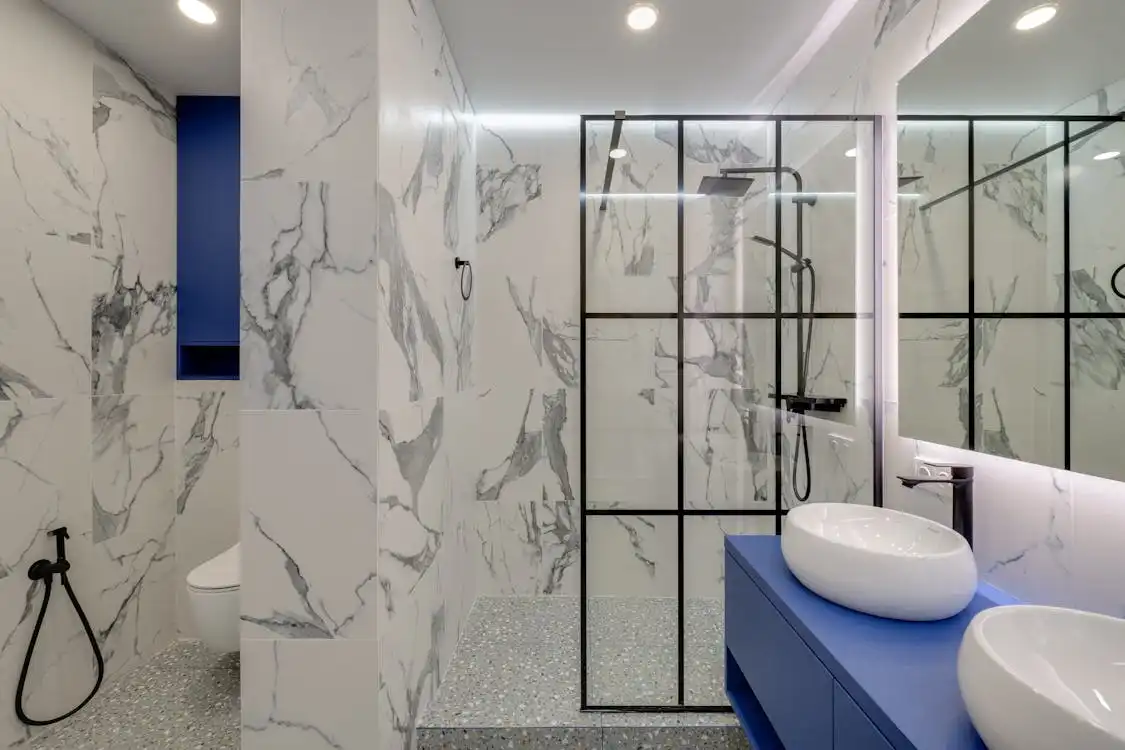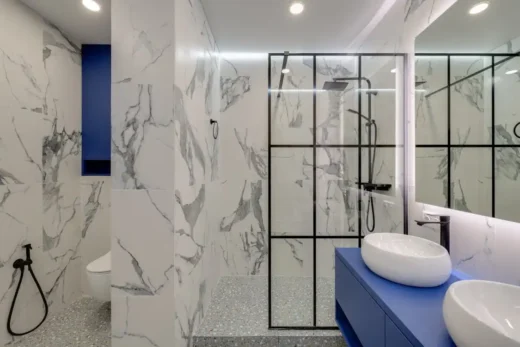Creating balance between practical home upgrades and personal taste, Climate change property design impact
Creating Balance Between Practical Home Upgrades and Personal Taste
29 April 2025
When it comes to upgrading your home, it’s easy to get caught between two goals—making smart, long-lasting improvements and wanting the space to actually feel like yours. You want things to work better and hold up over time, but you also don’t want to live in a space that feels cold or generic. Personal taste matters. So does practicality. And finding the right middle ground can take some trial and error.
If you live in Bloomington, this balance is especially important. There’s a wide mix of homes here—some older, some newer, and lots of remodels in between. That variety makes it easier to go your way, but it also means your upgrades should make sense for the space you have.
Skip the Tub
Large, outdated tubs often take up more space than they’re worth, especially if no one in your home uses them regularly. A walk-in shower opens up the room, adds comfort, and makes daily routines easier. It also gives you more freedom to choose tile, glass, and layout details that match your style without sacrificing function. Whether you’re going for clean lines or something more textured, the shower becomes a central design point that works for both comfort and visual impact.
For those considering bathroom remodeling in Bloomington, hiring experts who understand how to combine structure with personal design choices can prove worthwhile. Professionals familiar with local homes can help you work with your existing space while giving it a fresh update. You don’t have to choose between practical and personal; instead, you can have both, especially when your bathroom gets a thoughtful redesign that focuses on how you actually use the space.
Replace the Basics
A lot of homes come with basic builder-grade mirrors and light fixtures—functional, yes, but not very exciting. Swapping those out is one of the easiest ways to make a space feel more like your own. Mirrors with interesting shapes, frames, or materials can turn a plain wall into something with style. The same goes for lighting—whether it’s a modern pendant, a warm wall sconce, or a mix of textures, these pieces can shift the mood of a room without changing its layout.
There’s no need to redo the entire space. Just give the most visible parts a little more character. It’s a practical change, but one that lets your taste show through. And since it’s easy to reverse or adjust down the road, it doesn’t lock you into something you’ll regret later.
Leave Some Space
Leaving some blank wall space isn’t lazy or unfinished; it’s a design decision that gives everything else a chance to stand out. When every inch of a room is filled, the overall feel can get heavy or overwhelming, even if everything in it looks good on its own.
A blank wall doesn’t mean boring. It just keeps the space from feeling overdone. It also gives you flexibility down the line if you want to add something new without reworking the whole layout. Letting parts of your space stay simple is a practical move and one that still supports a design style that reflects you.
Keep Counters Classic
If you’re redoing a kitchen or bathroom but want to keep things balanced, one approach is to stick with neutral or classic countertop materials while using the backsplash to add personal flair. You can choose a bold tile color, fun pattern, or unusual texture without locking the whole room into one specific look. This setup lets the main surfaces stay flexible while still giving you room to express your style.
It’s a great way to test out personal taste without going overboard. If your style changes later or you decide to sell the home, you can switch out the backsplash more easily than replace the entire counter. That’s a small detail with a big impact, and it’s a practical compromise that still gives you something you like to look at every day.
Use Smart Tech Where Needed
Tech upgrades can make your home easier to live in, but they don’t all need to be visible or overly flashy. Things like USB outlets, motion-sensor lighting, or touch-activated switches are easy to use and blend right into your daily routine. The trick is to put them in places you’ll actually benefit from, like next to your bed, in the kitchen, or near your home office setup.
Instead of filling every room with the latest gadgets, think about what genuinely helps your routine. It’s a smart way to bring your home up to date without turning it into a showroom of technology.
Merge Small Details
People often forget about the little things—vent covers, outlet plates, ceiling fans, but those can throw off the whole feel of a room if they don’t fit in. Swapping them out for something that matches your space better helps everything feel more intentional.
You don’t need anything custom or expensive. Even matte black vents or simple wood-toned switch plates can go a long way in keeping the room cohesive without doing a full remodel.
Keep What Matters
Not everything old has to go. Some pieces, like an older dining table, a beat-up bookshelf, or a vintage light fixture, still have meaning. If they reflect your style or tell part of your story, let them stay. Even in a freshly updated space, those older elements can make the room feel more lived-in and less staged.
It’s not about being sentimental for the sake of it. It’s about balance. Keeping a few older or imperfect items gives the space personality and keeps it from feeling too polished or generic. Personal taste doesn’t always mean new.
Update Outside Too
Painting a shed to match your house trim, replacing the old garage light with something that fits your aesthetic, or even changing the door hardware can tie everything together. It helps the exterior feel like part of the home, not just leftover space.
When the outside feels like it’s been thought through, the whole home feels complete. Small changes make a big difference in how connected everything looks, especially if you’ve already spent time updating the interior.
Pick Windows That Fit
Window upgrades are usually done for comfort or energy reasons, but that doesn’t mean you have to settle for a style you don’t like. Choosing a window frame color or trim that complements your home’s interior is one way to get both function and style out of the same project.
It’s a detail that gets overlooked, but matching your windows to your interior color scheme (or at least not clashing with it) helps the transition from room to room feel smoother.
You don’t have to choose between a functional home and a personal one. The best updates are the ones that feel right for your life and still reflect your taste. With small, smart choices, you can keep the space working well and still make it yours. That balance is what turns a house into something that feels like home.
Comments on this guide to Creating Balance Between Practical Home Upgrades and Personal Taste article are welcome.
Interior Design
Interior Design Posts
Incorporating art deco elements in interior design
Wall decorations to transform any space
Interior Architecture Design Articles
Innovative interior and exterior building upgrade ideas
Green Buildings
Green Housing – Sustainability Posts
Role of sustainability in modern architecture
Green sustainable housing: nature house
Comments / photos for the Creating Balance Between Practical Home Upgrades and Personal Taste page welcome






